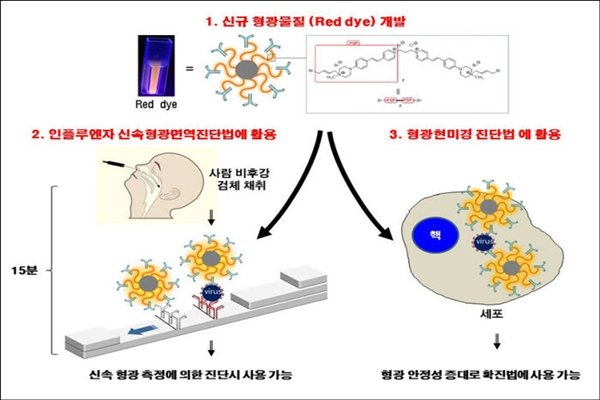Research team led by Professor Park Hyeon of Wonkwang University’s Zoonotic Infectious Disease Research Center has developed new fluorescent material that can improve detection rate of new flu, which is influenza A, by more than 20% than gold nanoparticles.
Research team announced on the 11th that it has developed a new diagnostic system that can quickly check on whether or not a person is infected with new flu and confirmed that its sensitivity is 23% bigger than a system that uses gold nanoparticles after carrying out clinical trials.

Research team also applied this method to immunofluorescence microscopy assay, which is used to confirm an illness, and confirmed that this method maintains 8 times higher optical stability than current fluorescent substance called fluorescein isocyanate. Detection ratio of avian influenza virus of this system was 16 times higher than gold nanoparticles. Because this method quantitatively shows result of diagnosis as numbers, it is seen as far superior than gold nanoparticle diagnostic kit that makes diagnosis through naked eye.
“It is meaningful that this newly-developed fluorescent substance can be used for rapid immunofluorescence assay.” said Professor Park. “This new system will be widely used for diagnostics that require high sensitivity and speed in variety of zoonotic infectious disease including influenza.”
Staff Reporter Kim, Hanshik | hskim@etnews.com